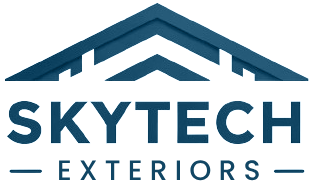What Are the Hidden Costs of Roof Replacement?
As you finalize your decision on replacing your roof, it’s
essential to understand not just the visible costs but also the potential
hidden costs associated with the project. These hidden expenses can
significantly impact your overall budget if not properly accounted for. This
article will explore the common hidden costs of roof replacement, provide
insights into how to manage them, and offer guidance on finding affordable
roofing options or the best roofing company near me.
Understanding Hidden Costs in Roof Replacement
When budgeting for a roof replacement, homeowners often
focus on the direct costs of materials and labor. However, several hidden costs
can arise, which may not be immediately apparent. These costs can affect your
total expenditure and should be planned for to avoid financial surprises.
Deck Repairs or Replacement
Cost Insight: The condition of your roof deck (the
underlying structure supporting the shingles) can greatly influence the total
cost. If the deck shows signs of rot, water damage, or other issues, it may
need repair or replacement. This can add $1 to $5 per square foot to your
project’s cost.
Statistical Insight: According to the National Roofing
Contractors Association (NRCA), deck repairs and replacements can increase the
cost of a roof replacement by up to 15-20%.
Permits and Inspections
Cost Insight: Depending on local regulations, you may need
to obtain permits for a roof replacement. This can range from $100 to $500.
Additionally, some areas require inspections before and after the work, which
can also incur additional costs.
Statistical Insight: A report by the International Code
Council (ICC) suggests that permit and inspection costs typically account for
2-5% of the total roofing project cost.
Unexpected Structural Issues
Cost Insight: During the roof replacement, contractors might
uncover structural issues such as damaged rafters or trusses. Addressing these
problems can add significant costs to your project, often ranging from $500 to
$3,000 depending on the extent of the damage.
Statistical Insight: According to a study by HomeAdvisor,
unforeseen structural repairs can increase the overall roofing project cost by
up to 10-25%.
Old Roof Removal and Disposal
Cost Insight: Removing the old roof and disposing of the
debris can be more costly than anticipated, especially if the old roof has
multiple layers or if there are large amounts of debris. Disposal costs can
range from $500 to $1,000 or more.
Statistical Insight: The cost of old roof removal and
disposal can make up about 15-20% of the total roofing project cost, as noted
by the Asphalt Roofing Manufacturers Association (ARMA).
Upgrades to Roofing Components
Cost Insight: If you opt for upgrades like better-quality
underlayment, improved ventilation systems, or additional insulation, these can
significantly increase the overall cost. Upgrades can add anywhere from $200 to
$2,000 or more to your project.
Statistical Insight: The cost of upgrades and high-quality
materials can add approximately 10-30% to the total roofing replacement cost,
according to the National Roofing Contractors Association (NRCA).
Damage to Landscaping or Property
Cost Insight: During roof replacement, there’s a risk of
damage to your landscaping, gutters, or exterior property. This can lead to
additional repair or replacement costs, which may not be immediately obvious.
Statistical Insight: The cost of repairing or replacing
damaged landscaping or exterior property typically ranges from $200 to $1,500,
based on industry estimates from the American Society of Home Inspectors
(ASHI).
Increased Energy Costs
Cost Insight: After a new roof installation, there may be a
temporary increase in your energy bills due to the adjustment period for the
new roofing materials. This cost is usually minimal but should be considered in
your overall budget.
Statistical Insight: Energy costs can temporarily increase
by 5-10% in the first few months after a roof replacement, according to data
from the Department of Energy (DOE).
Managing Hidden Costs
To manage and mitigate these hidden costs, consider the
following strategies:
Get Multiple Quotes: Obtain detailed quotes from several
roofing contractors to compare not just the base price but also the potential
hidden costs. Look for local roofing companies with transparent pricing and
comprehensive quotes.
Inspect Your Roof Deck: Have a professional roofer inspect
your roof deck before the project begins to identify any potential issues early
on. This can help you budget for necessary repairs and avoid surprises.
Understand Local Regulations: Research local permit and
inspection requirements to ensure you budget for these costs. Consulting with
your residential roofing contractor can provide clarity on what’s required.
Discuss Upgrades Early: If you’re considering upgrades,
discuss them with your contractor early in the process to understand how they
will affect the cost.
Include Contingency Funds: Set aside a contingency fund of
10-15% of the total project cost to cover unexpected expenses. This fund will
provide financial flexibility if unforeseen costs arise.
Choose Reputable Contractors: Select a well-reviewed and
reliable roofing company. For instance, if you’re looking for Charleston
roofing contractors or Mount Pleasant roofing company, ensure they have a solid
reputation for handling projects efficiently and transparently.
Understanding and preparing for the hidden costs of roof
replacement is crucial for a smooth and budget-friendly project. By being aware
of potential additional expenses, obtaining detailed quotes, and working with
reputable contractors, you can better manage your roofing project and avoid
unexpected financial strains.
If you’re in search of affordable roofing solutions or the
best roofing company near me, use the insights from this article to guide your
decisions. Ensuring that you’ve accounted for all potential costs will help you
achieve a successful roof replacement and maintain the integrity of your home
for years to come.


